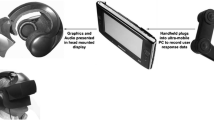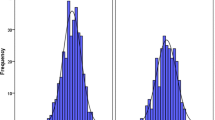Abstract
Human immunodeficiency virus (HIV)-associated neurocognitive disorder (HAND) affects around 20–50% of people living with HIV (PLWH). Although batteries of tests are used to identify neurocognitive impairment (NCI), they are long and difficult to perform during a routine clinic visit, thus impairing the ability to diagnose HAND. Therefore, a brief yet sensitive screening tool to identify NCI is necessary. This study prospectively evaluated an abbreviated screening battery with reported 86.5%/87.1% sensitivity/specificity, identified from a planned post-hoc analysis in a prior neurocognitive study among military PLWH. Adult HIV-positive military beneficiaries in the U.S. Military HIV Natural History Study, who agreed to undergo a comprehensive seven-domain neuropsychological battery (16 tests), and who completed an additional 20-min abbreviated battery (AB), comprised of four tests, prior to the full battery (FB) were included in this analysis. A group of 169 individuals completed both tests, of which 25.4% had a positive AB and 17.8% had NCI on FB (global deficit score ≥ 0.5). With the FB as the reference standard, the specificity for the AB was 79.9% (73.2–86.5), however the sensitivity was 50.0% (32.1–67.9). In those with NCI by FB but not AB, the most common impaired domains were executive function (73.3%) and memory (73.3%), both being domains not fully tested by the AB. An abbreviated HAND screening battery of four tests requiring approximately 20 min provided a relatively high level of specificity but lacked sensitivity for detection of NCI. Inclusion of additional domains or alternative scoring approaches may improve sensitivity but require further study. Continued efforts are needed to develop an effective brief screening test for HAND.
Similar content being viewed by others
Data Availability
Data for this study are available from the Infectious Disease Clinical Research Program (IDCRP), headquartered at the Uniformed Services University of the Health Sciences (USU), Department of Preventive Medicine and Biostatistics. The Informed Consent Document under which the HIV Natural History Study data were collected specifies that each use of the data will be reviewed by the Institutional Review Board. Furthermore, the data set may include Military Health System data collected under a Data Assurance Agreement that requires accounting for uses of the data. Data requests may be sent to: Address: 6270A Rockledge Drive, Suite 250, Bethesda, MD 20,817. Email: contactus@idcrp.org.
References
McArthur JC, Hoover DR, Bacellar H, Miller EN, Cohen BA, Becker JT, et al. Dementia in AIDS patients: incidence and risk factors. Multicenter AIDS Cohort Study Neurology. 1993;43(11):2245–52.
Sacktor NC, Wong M, Nakasujja N, Skolasky RL, Selnes OA, Musisi S, et al. The International HIV Dementia Scale: a new rapid screening test for HIV dementia. AIDS. 2005;19(13):1367–74.
Clifford DB, Ances BM. HIV-associated neurocognitive disorder. Lancet Infect Dis. 2013;13(11):976–86.
Heaton RK, Clifford DB, Franklin DR Jr, Woods SP, Ake C, Vaida F, et al. HIV-associated neurocognitive disorders persist in the era of potent antiretroviral therapy: CHARTER Study. Neurology. 2010;75(23):2087–96.
Crum-Cianflone NF, Moore DJ, Letendre S, Poehlman Roediger M, Eberly L, Weintrob A, et al. Low prevalence of neurocognitive impairment in early diagnosed and managed HIV-infected persons. Neurology. 2013;80(4):371–9.
Antinori A, Arendt G, Becker JT, Brew BJ, Byrd DA, Cherner M, et al. Updated research nosology for HIV-associated neurocognitive disorders. Neurology. 2007;69(18):1789–99.
Ku NS, Lee Y, Ahn JY, Song JE, Kim MH, Kim SB, et al. HIV-associated neurocognitive disorder in HIV-infected Koreans: the Korean NeuroAIDS Project. HIV Med. 2014;15(8):470–7.
Zipursky AR, Gogolishvili D, Rueda S, Brunetta J, Carvalhal A, McCombe JA, et al. Evaluation of brief screening tools for neurocognitive impairment in HIV/AIDS. AIDS. 2013;27(15):2385–401.
Carey CL, Woods SP, Rippeth JD, Gonzalez R, Moore DJ, Marcotte TD, et al. Initial validation of a screening battery for the detection of HIV-associated cognitive impairment. Clin Neuropsychol. 2004;18(2):234–48.
Marin-Webb V, Jessen H, Kopp U, Jessen AB, Hahn K. Validation of the international HIV dementia scale as a screening tool for HIV-associated neurocognitive disorders in a german-speaking HIV outpatient clinic. PLoS ONE. 2016;11(12):e0168225.
Kami-Onaga K, Tateyama M, Kinjo T, Parrott G, Tominaga D, Takahashi-Nakazato A, et al. Comparison of two screening tests for HIV-Associated Neurocognitive Disorder suspected Japanese patients with respect to cART usage. PLoS ONE. 2018;13(6):e0199106.
Kamminga J, Cysique LA, Lu G, Batchelor J, Brew BJ. Validity of cognitive screens for HIV-associated neurocognitive disorder: a systematic review and an informed screen selection guide. Curr HIV/AIDS Rep. 2013;10(4):342–55.
Moore DJ, Roediger MJP, Eberly LE, Blackstone K, Hale B, Weintrob A, et al. Identification of an abbreviated test battery for detection of HIV-associated neurocognitive impairment in an early-managed HIV-infected cohort. PLoS ONE. 2012;7(11):e47310.
Norman MA, Moore DJ, Taylor M, Franklin D Jr, Cysique L, Ake C, et al. Demographically corrected norms for African Americans and caucasians on the hopkins verbal learning test-revised, brief visuospatial memory test-revised, stroop color and word test, and wisconsin card sorting test 64-card version. J Clin Exp Neuropsychol. 2011;33(7):793–804.
Woods SP, Scott JC, Sires DA, Grant I, Heaton RK, Tröster AI. Action (verb) fluency: test-retest reliability, normative standards, and construct validity. J Int Neuropsychol Soc. 2005;11(4):408–15.
Diehr MC, Cherner M, Wolfson TJ, Miller SW, Grant I, Heaton RK. The 50 and 100-item short forms of the Paced Auditory Serial Addition Task (PASAT): demographically corrected norms and comparisons with the full PASAT in normal and clinical samples. J Clin Exp Neuropsychol. 2003;25(4):571–85.
Schretlen DJ, Testa, S. M., & Pearlson, G. D. CNNS Calibrated neuropsychological normative system professional manual. PAR, Inc.; 2010.
Heaton R, Walden Miller, S., Taylor, M. J., Grant, I. Revised Comprehensive Norms for an Expanded Halstead-Reitan Battery: Demographically Adjusted Neuropsychological Norms for African American and Caucasian Adults. PAR, Inc.
Walker KA, Brown GG. HIV-associated executive dysfunction in the era of modern antiretroviral therapy: A systematic review and meta-analysis. J Clin Exp Neuropsychol. 2018;40(4):357–76.
Heaton RK, Franklin DR, Ellis RJ, McCutchan JA, Letendre SL, LeBlanc S, et al. HIV-associated neurocognitive disorders before and during the era of combination antiretroviral therapy: differences in rates, nature, and predictors. J Neurovirol. 2011;17(1):3–16.
Sacktor N. Changing clinical phenotypes of HIV-associated neurocognitive disorders. J Neurovirol. 2018;24(2):141–5.
Cysique LA, Maruff P, Darby D, Brew BJ. The assessment of cognitive function in advanced HIV-1 infection and AIDS dementia complex using a new computerised cognitive test battery. Arch Clin Neuropsychol. 2006;21(2):185–94.
Cysique LA, Murray JM, Dunbar M, Jeyakumar V, Brew BJ. A screening algorithm for HIV-associated neurocognitive disorders. HIV Med. 2010;11(10):642–9.
Piatt AL, Fields JA, Paolo AM, Tröster AI. Action (verb naming) fluency as an executive function measure: convergent and divergent evidence of validity. Neuropsychologia. 1999;37(13):1499–503.
Tombaugh TN. A comprehensive review of the Paced Auditory Serial Addition Test (PASAT). Arch Clin Neuropsychol. 2006;21(1):53–76.
Duff K, Beglinger LJ, Van Der Heiden S, Moser DJ, Arndt S, Schultz SK, et al. Short-term practice effects in amnestic mild cognitive impairment: implications for diagnosis and treatment. Int Psychogeriatr. 2008;20(5):986–99.
Davidson DJ, Zacks RT, Williams CC. Stroop interference, practice, and aging. Neuropsychol Dev Cogn B Aging Neuropsychol Cogn. 2003;10(2):85–98.
Marin-Webb V, Jessen H, Kopp U, Jessen AB, Hahn K. Validation of the International HIV Dementia Scale as a Screening Tool for HIV-Associated Neurocognitive Disorders in a German-Speaking HIV Outpatient Clinic. PLoS One. 2016;11(12):e0168225-e.
Tierney SM, Sheppard DP, Kordovski VM, Faytell MP, Avci G, Woods SP. A comparison of the sensitivity, stability, and reliability of three diagnostic schemes for HIV-associated neurocognitive disorders. J Neurovirol. 2017;23(3):404–21.
Acknowledgements
The views expressed are those of the authors and do not necessarily reflect the official views of the Uniformed Services University of the Health Sciences, the National Institutes of Health, the Department of Health and Human Services, the Department of Defense, the Departments of the Army, Navy or Air Force, or the Henry M. Jackson Foundation for the Advancement of Military Medicine. Mention of trade names, commercial products, or organizations does not imply endorsement by the U.S. Government.
Funding
This study was conducted by the Infectious Disease Clinical Research Program (IDCRP), a Department of Defense (DoD) program executed by the Uniformed Services University of the Health Sciences (USUHS) through a cooperative agreement with The Henry M. Jackson Foundation for the Advancement of Military Medicine, Inc. (HJF). This project has been supported in whole, or in part, with federal funds from the National Institute of Allergy and Infectious Diseases, National Institutes of Health (NIH), under Inter‐Agency Agreement Y1-AI-5072 and from the Defense Health Program, U.S. Department of Defense, under Award HU0001190002.
Author information
Authors and Affiliations
Contributions
BKA, AG, RM, GU, ET, AN, JS, and BRS conceived/designed the work. BKA, AG, RM, GU, BRS, and JS acquired data. SW and HH analyzed data. BKA, CE, HH, JS, BRS, and AN interpreted data. BKA and CE drafted the work. All authors revised the manuscript critically for important intellectual content and approved the final version to be published.
Corresponding author
Ethics declarations
Conflict of Interest
The authors declare no competing interests or financial interest in this work.
Ethical Approval
This study was approved centrally by the Uniformed Services University of the Health Sciences’ institutional review board and by the participating sites (Walter Reed National Military Medical Center and Naval Medical Center San Diego).
Consent to Participate
All participants provided written informed consent.
Additional information
Publisher's Note
Springer Nature remains neutral with regard to jurisdictional claims in published maps and institutional affiliations.
Rights and permissions
About this article
Cite this article
Agan, B.K., Won, S.H., Ganesan, A. et al. Prospective Evaluation of an Abbreviated Test Battery to Screen for Neurocognitive Impairment in HIV-Positive Military Members. AIDS Behav 25, 3347–3354 (2021). https://doi.org/10.1007/s10461-021-03341-6
Accepted:
Published:
Issue Date:
DOI: https://doi.org/10.1007/s10461-021-03341-6




